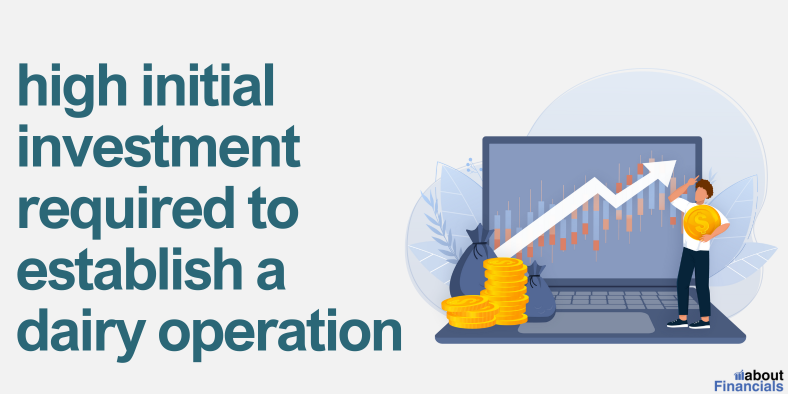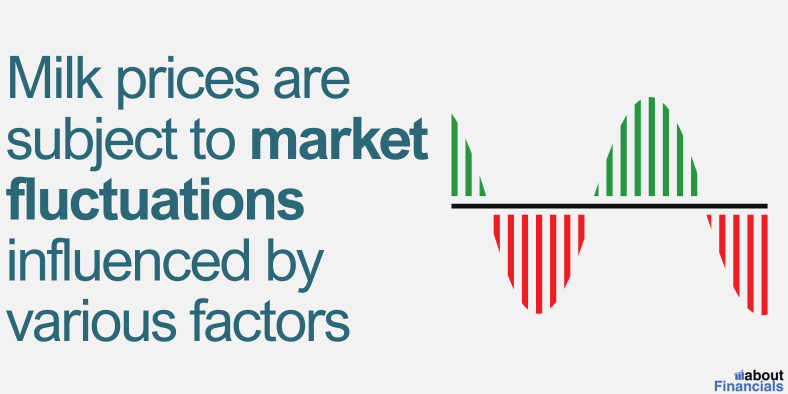Dairy farming, a vital component of the agricultural industry, involves the production of milk and dairy products such as cheese, butter, and yogurt.
It is an essential sector that serves both local and global markets, providing a range of dairy products consumed by millions of people worldwide.
In this article, we will explore the pros and cons of dairy farming, shedding light on various aspects of this industry.
Understanding the advantages and disadvantages associated with this sector is essential for those considering to make money by raising cattle or seeking knowledge about its impact on society and the environment.
Pros of Dairy Farming
Potential for profitability

The demand for dairy products remains consistently high, ensuring a stable market for dairy farmers.
Milk, cheese, butter, and other dairy products are staple food items consumed by individuals of all age groups, which creates a reliable income stream.
Dairy farmers also have the opportunity to explore diversification. By producing specialty cheeses, yogurts, ice cream, or other value-added products.
Farmers can tap into niche markets and potentially command higher prices, thus enhancing profitability.
Job creation and economic impact
Dairy farming plays a vital role in job creation and contributes to local economies.

Operating a dairy farm requires a dedicated workforce to handle tasks such as animal care, milking, feed management, and farm maintenance. As a result, dairy farms become sources of employment, particularly in rural areas where alternative job opportunities may be limited.
The economic impact of dairy farming extends beyond the farm gate.
Dairy farms rely on suppliers for equipment, veterinary services, feed, and other inputs, which supports local businesses. The ripple effect of dairy farming on the economy can be substantial, boosting the prosperity of the surrounding communities.
Nutritional value of dairy products
Dairy products are valued for their nutritional composition and play a crucial role in a balanced diet.
Milk, for instance, is a rich source of calcium, protein, vitamins (such as vitamin D and B12), and minerals necessary for healthy bone development, muscle function, and overall well-being.
Value-added products
By diversifying their product offerings, farmers can cater to specific consumer preferences and tap into niche markets.
For example, producing specialty cheeses, organic dairy products, or artisanal butter can attract consumers who are willing to pay premium prices for unique and high-quality items.
Agri-tourism
In addition to value-added dairy products, dairy farmers can also explore agritourism or farm-based experiences. Opening up their farms to visitors for activities such as farm tours, cheese-making workshops, or farm-to-table events can provide an additional revenue stream and enhance the overall profitability of the operation.
Cons of Dairy Farming
High initial investment
One of the significant challenges in dairy farming is the high initial investment required to establish a dairy operation.

Dairy farmers need to acquire land, construct or renovate barns, purchase milking equipment, and acquire livestock. These expenses can be substantial and require careful financial planning and access to capital.
Furthermore, operating costs such as feed, veterinary care, utilities, and labor expenses add to the financial burden.
The cost of purchasing and maintaining high-quality feed, ensuring proper animal health, and managing the overall operation can significantly impact the profitability of a dairy farm.
Labor-intensive nature of the industry
Dairy farming is a labor-intensive industry that demands consistent dedication and hard work.
Cows require regular care, including milking, feeding, and monitoring their health. Farmers often have to adhere to strict milking schedules, sometimes involving early mornings and late nights, to ensure proper milk production and animal well-being.
Finding skilled and reliable labor can also be a challenge in some regions.
The physical demands and round-the-clock nature of dairy farming can make it difficult to attract and retain qualified workers, which adds complexity to the daily operations of a dairy farm.
Environmental impact
Dairy farming has a notable environmental impact, primarily related to waste management and resource usage.
The management of manure and wastewater can pose challenges, as proper storage, treatment, and disposal methods are necessary to prevent pollution and minimize the impact on water sources and surrounding ecosystems.
Furthermore, dairy farming requires substantial land for grazing and growing animal feed.
The conversion of land for these purposes can contribute to deforestation and habitat loss if not managed sustainably. Additionally, the intensive use of water for irrigation and animal hydration raises concerns about water resource depletion and conservation.
Volatility in milk prices

Milk prices are subject to market fluctuations influenced by factors such as supply and demand, global trade dynamics, and government policies. Sharp declines in milk prices can significantly affect a dairy farm’s revenue, making it challenging to cover operating costs and generate a reasonable return on investment.
Input cost variability
Dairy farming is vulnerable to fluctuations in input costs, such as animal feed, fuel, and supplies.
The prices of these inputs can be subject to change due to factors like climate conditions, market conditions, and geopolitical events. Fluctuations in feed prices, for example, can impact a dairy farm’s profitability by directly affecting the cost of maintaining and nourishing the herd.
Challenges and Concerns
Animal welfare issues
The dairy farming industry has faced scrutiny regarding animal welfare practices. Concerns have been raised about the living conditions and treatment of dairy cows, including issues such as confinement systems, access to pasture, and the separation of calves from their mothers. These concerns have led to increased public awareness and calls for improved animal welfare standards within the industry.
Market volatility
As we discussed above, the dairy industry is prone to market volatility, with milk prices experiencing fluctuations over time. Factors such as changes in consumer preferences, international trade dynamics, and shifts in supply and demand can influence milk prices.
Frequently asked questions related to dairy industry
What is the biggest threat to the dairy industry?
One of the biggest threats to the dairy industry is the changing consumer preferences and dietary choices. With an increasing number of individuals adopting plant-based diets or seeking alternative milk sources, the demand for traditional dairy products has been affected.
Why are dairy farmers struggling?
One primary factor is the volatility of milk prices, which can fluctuate due to factors such as supply and demand dynamics, global market conditions, and trade policies. Additionally, high operating costs, including expenses related to feed, labor, equipment, and animal healthcare, can strain the financial viability of dairy farms. The combination of these factors, along with environmental and regulatory pressures, can make it difficult for dairy farmers to maintain profitability.
Why is the US dairy market failing?
Factors such as changing consumer preferences, increased competition from plant-based alternatives, and trade dynamics impact the market. Additionally, the oversupply of milk in certain regions, the consolidation of dairy farms, and the pressure to maintain profitability in a volatile market have posed significant challenges to the US dairy industry.
What climate is best for dairy farming?
Dairy farming is suitable in a range of climates, but certain conditions are considered more favorable. Moderate climates with temperatures ranging between 50-75°F (10-24°C) are generally preferred, as they are conducive to healthy pasture growth and comfortable conditions for cows. However, dairy farming can also be successful in regions with varying climates by providing appropriate housing, ventilation, and feed management to ensure the well-being of the cows.
What happens to old dairy cows?
When dairy cows reach the end of their productive life, they may be sold for beef processing. These cows typically enter the beef industry and are used for meat production. The meat from older dairy cows is often used in products such as ground beef or processed meat items.
What do dairy farms do with baby cows?
A: Baby cows, also known as calves, are usually separated from their mothers shortly after birth. On dairy farms, female calves are often raised to become replacement dairy cows, entering the milking herd once they reach maturity. Male calves, on the other hand, may be raised for veal production, sold for beef, or raised for breeding purposes in the beef industry.
What is the average lifespan of a dairy cow?
A: The average lifespan of a dairy cow varies, but it is typically around 5 to 7 years. However, some well-cared-for dairy cows can live up to 12-15 years or more. The lifespan of a dairy cow can be influenced by factors such as genetics, management practices, healthcare, and overall herd health.
Is dairy farming sustainable?
Dairy farming has the potential to be sustainable when proper management practices are implemented. Sustainable dairy farming involves prioritizing animal welfare, efficient manure management and reducing water usage. Additionally, adopting regenerative agricultural practices and minimizing the use of synthetic inputs can contribute to the sustainability of dairy farming.
Final thoughts
In conclusion, dairy farming presents both advantages and challenges that individuals should consider when venturing into this industry.
By understanding the pros and cons of dairy farming, individuals can make informed decisions, implement best practices, and navigate the challenges effectively, ensuring the sustainable growth and success of their dairy operations.

